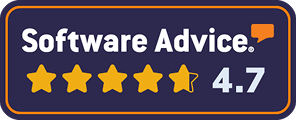As a graphic designer, your resume serves as a blank canvas on which you can display your creativity, skill set, and distinct style. It's your chance to make a statement and demonstrate to potential employers why you're the best candidate for the job!
{{quick-link-3="/sandbox/home-v3"}}
However, it can be difficult to know where to begin. Don't worry, we're here to help! In this article, we'll walk you through the steps of creating a standout resume for a graphic designer that will catch the attention of hiring managers. We can help you with everything from writing a compelling summary to emphasizing your KPIs and OKRs.
So, let's get started on crafting a resume masterpiece that will land you your dream job!
Related Articles:
- Copywriter Resume
- SEO Manager Resume
- Data Analyst Resume
- Marketing Specialist Resume
- Brand Manager Resume
- Product Manager Resume
- UX & UI Designer Resume
How to write Graphic Designer Resume Summary - Examples (Right and Wrong)
A resume summary statement is a concise part that highlights your most important qualifications. For your graphic designer resume, you should highlight your design abilities and demonstrate that you have experience producing successful visual solutions.
Here are examples of right and wrong graphic designer resume summaries:
Right: Skilled creative graphic designer with more than 5 years of experience producing eye-catching designs for print and the web. Proficient with the Adobe Creative Suite and have previously worked on creating logos, brands, and marketing materials. Commended for exceptional attention to detail, and the capacity to collaborate with clients to produce projects on schedule and within budget.
Wrong: Graphic designer looking for a challenging position in a growing company where I can use my talents to contribute to the success of the company.
Unlike the right example, the wrong one is overly general and offers no insight into the qualifications or expertise of the applicant.
How to write Graphic Designer Resume Objective - Examples (Right and wrong)
A resume objective statement is a brief section on your career goals and objectives. It can be helpful especially for entry-level candidates or those looking to change careers.
Your resume objective as a graphic designer should demonstrate your passion for design and your desire to use your skills to contribute to the company's success.
Here are examples of right and wrong graphic designer resume objectives:
Right: Highly motivated graphic designer seeking entry-level position in a dynamic creative team. Proficient in [for example, Adobe Creative Suite] with a strong understanding of design principles and experience creating branding and marketing collateral. Design enthusiast dedicated to delivering high-quality work that meets client objectives.
Wrong: Looking for a graphic design job because I'm good at designing on Canva.
Again, the incorrect example is too general and provides no information about the candidate's skills or experience.
What are Graphic Designer KPIs and how do they fit your resume?
Key Performance Indicators (KPIs) are metrics used to assess a project's or business's success. As a graphic designer, your key performance indicators (KPIs) can include metrics like client satisfaction, project completion time, or the number of designs created.
Including your key performance indicators (KPIs) on your resume can help you stand out from the competitive applicant pool, as well as demonstrate your ability to meet and exceed expectations.
Here are some examples of KPIs for Graphic Designing and how to include them on your resume:
[fs-toc-omit]Conversion rates:
Your work as a graphic designer can have a direct impact on conversion rates for marketing materials such as landing pages, emails, and social media posts. Including conversion rates as a key performance indicator (KPI) on your resume can demonstrate your ability to create visually appealing and effective marketing materials.
Include it in your resume using this example, “Created a landing page that resulted in a 20% increase in conversion rates."
[fs-toc-omit]Brand Consistency:
Maintaining brand consistency across all marketing materials is critical for increasing brand recognition and trust. Including this KPI on your resume shows your attention to detail and ability to execute a unified visual identity.
“Developed brand guidelines and ensured consistency across all marketing materials, resulting in a 15% increase in brand recognition."
[fs-toc-omit]Project completion rate:
Timeliness is critical in the design world because clients frequently have tight deadlines. Including your project completion rate on your resume can demonstrate your ability to manage your time effectively and deliver projects on time.
For example, "Completed 95% of all design projects ahead of schedule, resulting in increased client satisfaction."
[fs-toc-omit]Client satisfaction:
A critical aspect of any graphic design project is ensuring client satisfaction. Including this KPI on your resume demonstrates your ability to understand and meet the needs of your clients.
"Maintained a 95% client satisfaction rate through effective communication and collaboration during design projects”.
[fs-toc-omit]Social media engagement:
As the importance of social media for businesses grows, it is critical to create visually appealing and engaging social media content. Including this KPI on your resume shows that you can create engaging social media content that drives engagement.
"Designed social media graphics that resulted in a 40% increase in engagement and a 25% increase in followers”.
KPIs provide specific examples of your success and can assist you in emphasizing your competence as a graphic designer in your resume.
How to Describe Your Experience as a Graphic Designer - With Examples
Your experience section is the perfect section to include a detailed description of your previous work as a graphic designer! This should include information about the projects you worked on, your responsibilities, and your accomplishments.
Use specific examples and quantify your results whenever possible. Here is an example:
[fs-toc-omit]Work Experience
Graphic Designer, ABC Company,
January 2019 - Present
- Created brand identity and visual communication strategies for a wide range of clients in a variety of industries, resulting in a 15% increase in sales.
- Developed marketing materials such as brochures, flyers, and social media posts to effectively communicate brand messaging and result in a 25% increase in website traffic.
- Managed multiple design projects at the same time, delivering high-quality work on time and within budget, resulting in a client satisfaction rate of 98%.
- Conducted market research and trend analysis to create innovative and effective design concepts that met and exceeded client expectations.
- Collaborated with clients to understand their needs and develop effective visual solutions.
- Achieved a 95% client satisfaction rate and consistently completed projects on time and within budget.
When describing your experience, emphasize your accomplishments and the impact of your work on the project's or company's success. Use action verbs to describe your abilities and the outcomes you achieved.
When possible, be specific and quantify your accomplishments.
Read more: Learn how to highlight self-taught skills on your resume!
How to write Graphic Designer Resume Description Section - Examples (Right and wrong)
Your resume description section should provide a brief overview of your graphic design skills and experience. This section should emphasize your strengths and give a clear picture of what you bring to the table as a designer.
Here are some examples of how to write the description section of a graphic designer resume the right and wrong way:
[fs-toc-omit]The Right Way:
As a graphic designer with over 5 years of experience, I have developed a strong skill set in creating visually stunning designs for web and print. I am an [designing platform such as Adobe Creative Suite] expert with experience designing branding, logos, and marketing collateral. I am dedicated to delivering high-quality work that meets client objectives while remaining on time and within budget.
[fs-toc-omit]The Wrong Way:
I am a graphic designer with experience designing for web and print.
Avoid sounding uncertain of your skills or experience, and providing a broad response like in the wrong example.
What are Graphic Designer OKRs and how do they fit your resume?
Companies use the goal-setting framework known as OKRs (Objectives and Key Results) to align teams and people around particular goals and monitor their progress.
By including OKRs in your graphic designer resume, you can show that you have the ability to connect your work with organizational objectives and produce quantifiable outcomes.
Here are some examples of how to include OKRs in your resume:
[fs-toc-omit]Objective: Boost website visits by 20%
Key outcome: Create and release a new website that is mobile- and search-engine friendly.
To incorporate in your resume: "Designed and debuted a new website that doubled website traffic in the first month of operation."
[fs-toc-omit]Objective: Increase social engagement by 40%
Key result: Create an appealing social media content calendar and graphics that are in line with the brand's theme.
"Developed a social media content calendar and produced compelling graphics that raised social media engagement by 38% over a 3-month span."
[fs-toc-omit]Objective: Increase lead generation by 15%
Key Outcome: Develop a lead magnet, like an e-book or white paper, and design eye-catching landing sites to market it.
"Designed an eye-catching e-book and developed landing pages that led to a 20% increase in lead generation within the first month of marketing."
You can demonstrate your capacity to harmonize your work with company objectives and produce quantifiable results by including particular OKRs in your resume. This can help you stand out from the competition and show how valuable you are as a strategic graphic designer.
Entry-level + Advanced level Graphic Designer Resume - Examples
Here is a sample resume template for beginners and entry level graphic designers:

Source: Graphic Design Resume Guide: Example And Templates.
Here is a resume sample template for experienced graphic designers:

Source: Graphic Designer Resume Sample & Guide.
How to Put Skills on a Graphic Designer Resume - Examples
It's crucial to emphasize both technical and soft skills when listing skills on a graphic designer resume. While technical expertise demonstrates your command of design software and tools, soft skills will emphasize your capacity for teamwork with clients, coworkers, and stakeholders.
Here are some important skills to take into account when writing a graphic designer resume:
[fs-toc-omit]Technical Skills:
- Adobe Creative Suite (Photoshop, Illustrator, InDesign, After Effects)
- Sketch
- Figma
- HTML/CSS
- WordPress
- UX/UI design
- Responsive design
- Motion graphics
[fs-toc-omit]Soft Skills:
- Communication
- Time management
- Project management
- Teamwork
- Attention to detail
- Creativity
- Problem solving
- Adaptability
Here is the right way to incorporate these into your graphic designer resume:
[fs-toc-omit]Right:
- Design: Proficient in concept development, branding, layout design, typography, image manipulation, print and digital media design.
- Technical skills: Experienced with Adobe Creative Suite (Photoshop, Illustrator, InDesign, After Effects), Sketch, Figma, HTML/CSS, WordPress, UX/UI design, responsive design, motion graphics.
- Soft skills: Commended for communication, time management, project management, teamwork, attention to detail, creativity, problem solving, adaptability.
By listing these and other relevant skills on your resume, you can highlight your expertise and demonstrate that you have the qualifications to succeed in a graphic designer position.
How to write a Cover Letter for a Graphic Designer Resume? (Sample - Experienced and Inexperienced)
A cover letter is essential for any job application, including one for a graphic designer position. It allows you to highlight your qualifications and explain why you are the best candidate for the role.
To make your life simpler, here is a sample cover letter for an experienced graphic designer:
[fs-toc-omit]Experienced graphic designer Sample:
Dear [Name of Hiring Manager],
I am very enthusiastic about applying for the [Position] at [Company Name]. I have over [Number of Years] of graphic design experience and a strong passion for creating visually stunning designs that capture the essence of a brand.
In my current position at [Current Company], I am in charge of developing various marketing materials, such as website designs, social media graphics, and print collateral. My work has contributed to the company's increased engagement and conversions. One of my recent projects included the creation of a series of brochures that assisted in increasing sales by 25% in three months.
As an experienced graphic designer, I am familiar with Adobe Creative Suite, Sketch, and other design software. I am also skilled at developing and managing brand guidelines, which ensure consistency across all marketing materials.
I am confident that my skills and experience qualify me for this position. Thank you for taking the time to consider my application. On request, I would be happy to provide additional information or samples of my work.
Sincerely,
[Your Name]
There’s no need to worry if you feel like you don’t have the right experience. Here is a sample cover letter for an inexperienced graphic designer:
[fs-toc-omit]Inexperienced graphic designer Sample:
Dear [Hiring Manager's Name],
I'm writing to express my interest in the [Position] position at [Company Name]. As a recent graduate with a degree in graphic design, I am eager to begin my career in this field and am excited about the opportunity to work with such a reputable company.
Throughout college, I honed my skills in Adobe Creative Suite, Sketch, and other design software. I have completed several projects that demonstrate my ability to create visually stunning designs while adhering to brand guidelines. I am confident that my enthusiasm for design and eagerness to learn make me an excellent fit for this position.
While I have little direct industry experience, I am eager to put in the effort and learn as much as possible. I am excited about the prospect of joining your team and contributing to your company's success.
Thank you for taking the time to consider my application. I eagerly await the opportunity to discuss my qualifications in greater depth.
Regards,
[Your Name]
In both cases, tailor the cover letter to the specific job and company, emphasizing relevant skills and experience that make you a strong candidate. Make sure to proofread thoroughly and that your letter is well-organized and easy to read.
Conclusion:
In conclusion, creating a standout graphic designer resume requires careful consideration of your skills, experience, and accomplishments. We hope this article will ensure that your resume highlights your strengths, communicates your value proposition, and is in line with the job requirements.
Remember to customize your resume for each position you apply for, proofread thoroughly, and maintain a professional demeanor throughout the process.
Good Luck!
Also Read: Learn product design for non-designers through a guide to design thinking!






.webp)






